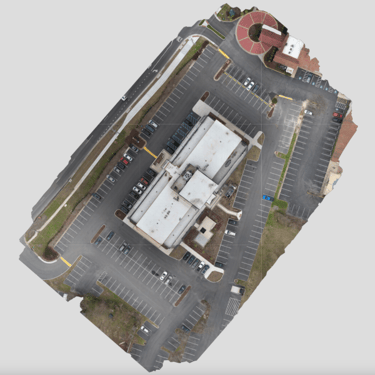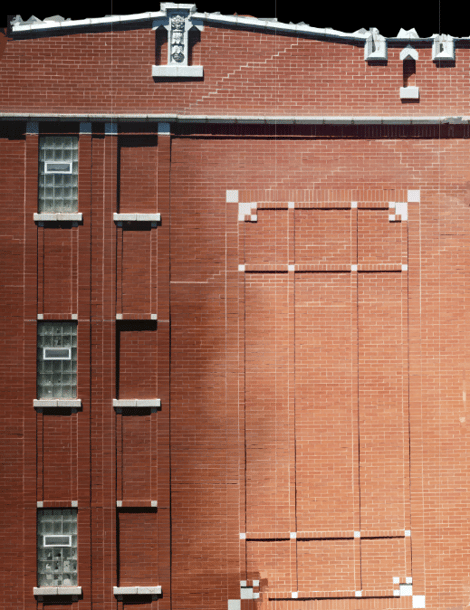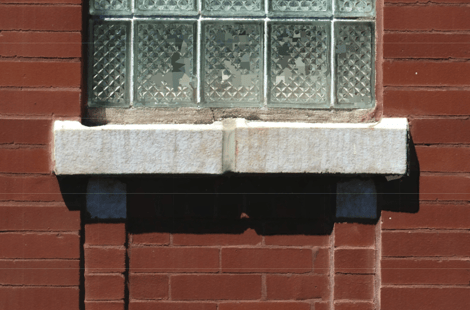In the realm of building inspection, where precision and thoroughness are paramount, a groundbreaking technology has emerged, reshaping the way architects, engineers, and building owners approach facade assessment. High-resolution 2D orthomosaics derived from drone flights are paving the way for unparalleled insights into building facades, offering a level of detail and coverage never before achievable through traditional methods. Let's delve into the transformative potential of this revolutionary technology.
Understanding Orthomosaics
An orthomosaic is a high-resolution, georeferenced image composed of multiple aerial photographs stitched together using advanced photogrammetry techniques. During a drone flight, the unmanned aerial vehicle captures a series of overlapping images of the building facade from various angles and altitudes. These images are then processed using specialized software to create a seamless, orthorectified map of the entire facade.
This process, closely linked to photogrammetry, leverages the principles of geometry and image analysis to ensure accurate spatial representation. The number of photos required varies depending on factors such as building size, complexity, and desired resolution. While specialized equipment and software are typically employed for optimal results, advancements have made this technology increasingly accessible to a wider range of users.
 Traditional top-down drone map orthomosaic
Traditional top-down drone map orthomosaic
Originally, orthomosaics were used in birds-eye-view perspective to create maps for surveying purposes. Now, orthomosaics are being used for vertical inspection as well for building facades.
Unparalleled Resolution and Insight
The resolution of high-quality orthomosaics rivals that of the original photographs, offering a level of detail akin to physically standing next to the building. This level of clarity enables inspectors to identify minute defects, cracks, or anomalies that may not be visible to the naked eye or through traditional inspection methods.
With the ability to view the facade from any angle and zoom in on specific areas of interest, inspectors gain comprehensive visual coverage without the limitations of scaffolding drops or ground-level inspections. This virtual vantage point provides an immersive experience, allowing for thorough analysis and informed decision-making from the comfort of an office setting.
 Composite Orthomosaic View
Composite Orthomosaic View
 High-Resolution Zoom In of Orthomosaic Section
High-Resolution Zoom In of Orthomosaic Section
Diverse Applications and Benefits
The applications of high-resolution orthomosaics in building facade inspection are vast and multifaceted:
Complete Visual Coverage
Unlike traditional methods that rely on sample coverage, orthomosaics offer 100% visual coverage of the facade, leaving no area uninspected.
Superior Inspection Quality
Compared to ground-level or binocular inspections, orthomosaics provide unparalleled clarity and detail, enabling inspectors to detect issues with precision and accuracy.
Enhanced Reference and Comparison
Orthomosaics include precise location references, facilitating easy comparison between different time periods or conditions. This feature is invaluable for monitoring changes over time and assessing the effectiveness of maintenance or repair efforts.
Architectural and Engineering Applications:
Engineers and architects can utilize orthomosaics for markup, regulatory filings, and overlay onto facade drawings. They also serve as valuable documentation for identifying areas in need of repair or renovation.
Considerations and Limitations
While the benefits of orthomosaic technology are substantial, it's essential to acknowledge its limitations and drawbacks:
Limited Repair Capabilities
Orthomosaics do not facilitate physical repairs or direct tactile inspections, such as tapping or probing for structural integrity.
Coverage and Accuracy Challenges
Certain areas may be challenging to capture accurately, leading to potential gaps or blurred sections in the orthomosaic. Additionally, reflective or transparent facade materials may impede image quality and analysis.
Complementary Approach
Orthomosaic technology should be integrated into a comprehensive inspection strategy that incorporates other methodologies to ensure compliance with professional standards and regulatory requirements.
The Future of Orthomosaics
As technological advancements continue to unfold, the future of orthomosaic technology looks promising. Innovations in artificial intelligence, such as neural radiance fields and Gaussian splat reconstruction, are enhancing the computational capabilities of constructing composite imagery from drone flights. These developments aim to further improve the accuracy, efficiency, and speed of orthomosaic creation, driving continuous innovation in the field of building facade inspection.
High-resolution 2D orthomosaics derived from drone flights represent a transformative tool in the realm of building facade inspection. With unparalleled resolution, comprehensive coverage, and diverse applications, this technology empowers inspectors, architects, and engineers to conduct thorough assessments and make informed decisions with unprecedented precision and efficiency. As the technology continues to evolve, its potential to revolutionize the built environment and elevate inspection standards remains boundless.